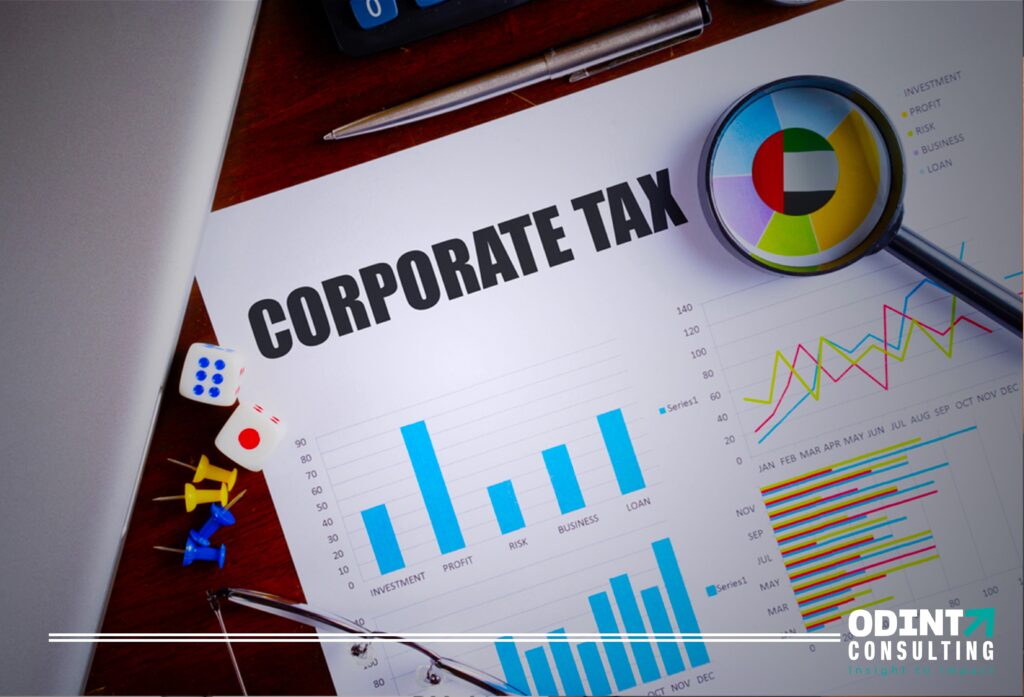
Overview: Corporate Income Tax In USA
The tax reform provisions of the United States were put into action on December 22nd, 2017. This put the US from a global taxation system to a territorial taxation system. Apart from other modifications, this movement completely lowered the corporate income tax rate from 35% to 21% for tax years starting after December 31st, 2017.
The wages made by the non-US citizens are based on whether their wage has a connection with the US, and the extent and level of the presence of that non-US citizen shows in the US.
Lets, understand more about corporate income taxes applicable to companies in USA.
Table For Corporate Income Tax In USA
| Indicator | Data | Period |
|---|---|---|
| Corporate Income Tax Rate (Federal) | 21% | 2022 |
| Corporate Income Tax Rate (State) | 1-12% | 2022 |
S Corporations
Firms that have a hundred or fewer qualified stakeholders, who aren’t corporations, and also match all the necessary criteria, may get elected to get taxed under the IRC’s (Internal Revenue Code) Subchapter S. And therefore, are termed as S corporations. The taxation structure of the S corporation is similar to partnerships, but not the same. This means that all the tax elements, such as the deductions, income, etc, flow by the entity owners. Therefore, the S corporations usually aren’t subjected to the US federal IT (Income Tax).
Alternative Minimum Tax (AMT)
The Alternative Minimum Tax was put on businesses excluding the S corporations and corporations with a 3-year average yearly gross receipts, not topping 7.5M USD, a.k.a., small C corporations. The tax constituted 20% of AMTI (alternative minimum taxable income) beyond a USD 40,000 exclusion threshold. AMTI was calculated by subtracting certain modifications and ‘tax preference’ elements from the company’s usual tax liability. If a company has significant depreciation expense, percentage erosion, unique drilling expenses, or non-taxable profits, tax preferential or adjustment issues may develop.
Gross Transportation Income Taxes
An annual 4% tax on USSGTI (US-source gross transportation income) is imposed on international companies and people who identify as aliens and non-residents, excluding specific revenue recognized as effectively joined with a US business or activity.
The transportation income is defined as any revenue earned from or connected to:
- the utilization (or renting or renting for utilization) of a vehicle or plane
- the provision of services related directly to the utilization of an aircraft or vessel.
Base Erosion and Anti-abuse Tax
The BEAT, or base erosion and anti-abuse tax, is the new US federal tax that focuses on the US tax-base erosion by putting an extra corporate tax obligation on businesses excluding S corporations, and RICs (regulated investment companies), or REITs (real estate investment trusts). This tax obligation on businesses with their partners has 3 years of average yearly gross receipts ending with the previous tax year of 500M USD or more.
The most prominent ones out of all the exclusions are the new DRD, dividends received deduction, NOL deduction, deduction concerning the modified section of GILTII, global intangible low-taxed income, a new deduction for FDII, foreign-derived intangible income, eligible derivative transactions stated in the guidelines, and some other payments for facilities.
The BEAT functions similarly to a minimum tax. BEAT is paid by businesses to the degree that it exceeds their standard CIT burden. 10 % of “modified taxable income” excluding standard CIT liability equals BEAT. Conventional tax liability is reduced by “base erosion” contributions given to associated foreign entities to arrive at modified tax liability. Expenses for activities, interest, rentals, and royalties, as well as amortization and depreciation deductions, are all put back to tax liability to create modified taxable income. Contributions for sold goods cost, FDII, and GILTII exemptions, and the dividend payments exemption are not, therefore, placed back.
In general, a base-eroding contribution is any payment made or accumulated by the tax submitter to a connected foreign citizen that is taxable or to purchase assets subject to amortization or depreciation, or for reinsurance obligations. Some contributions by ‘expatriated businesses’ are also included in this group and are susceptible to Section 7874’s anti-inversion requirements.
The scheme is applicable to base erosion amounts paid or incurred in tax years commencing after 31st December 2017. For taxable years starting after 31st December 2025, the proportion of modified taxable income relative to regular tax obligation rises to 12.5%, allowing all deductions to be considered in assessing the regular taxable income of a US firm. Financial institutions, insurance firms, and ‘expatriated companies’ are subject to additional regulations.
State And Local Income taxes
The corporate income tax rates differ within states and usually fall between 1-and 12%. There might be some states that put no income tax. Federal taxable income is the most popular taxable base. It is enhanced by the provisions of the state and is usually allocated to a state depending on the allotment formula comprising the following elements:
- Rental expense & tangible assets
- Payroll
- Sales & other receipts
Several states are dropping the 3-factor formula to move to the 1-factor receipts allotment technique.
Conclusion
Now that we have reached the end of this blog, we hope that you are now aware of what are the Corporate Income Tax rates in the US, and also must have understood the concepts revolving around it.
FAQ’s
The highest CIT rate in the United States is now 21%. Furthermore, local and state governments in the United States may impose CIT within the same tax base, but these taxes are normally deducted from firms’ federal income tax foundation.
Most firms do not tax their investors directly on their profits, but they do have to pay taxes on the profits they receive. Investors of S corporations & mutual funds, on the other hand, are now taxed on business income rather than dividends.
In most cases, CIT is calculated on gross taxable income. This will be your gross income less any tax deductions you may have.
